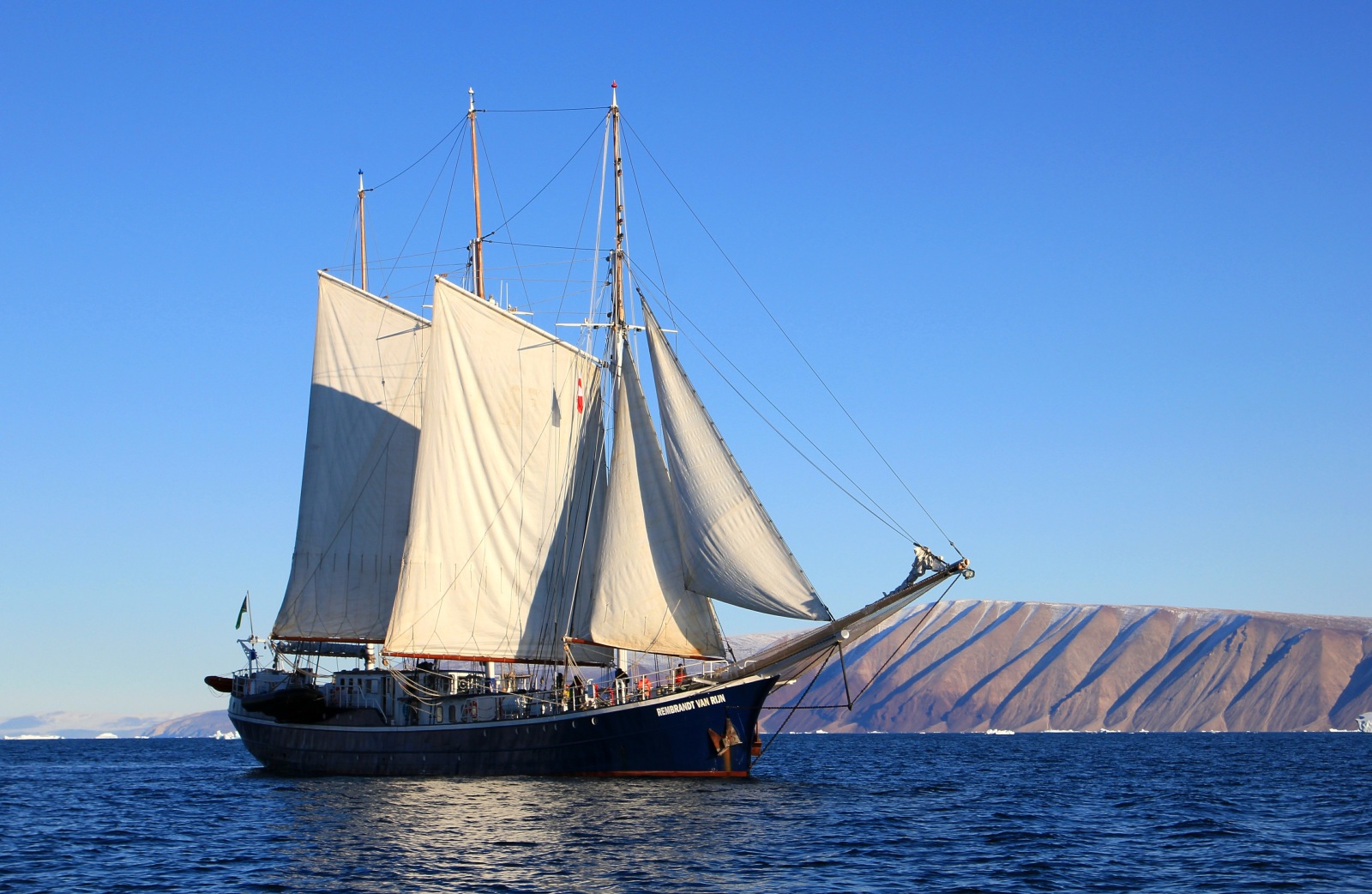Hoist the sails for wind power!
Interview with
So it seems that, in the world of shipping, there's not going to be any huge green  revolution but aren't we missing a trick here? Because ships were around long before the industrial revolution and managed to make it all the way around the world without burning any fuel. They used the power of the wind - so does the future of shipping lie in its past? Connie Orbach met with one entrepreneur who certainly thinks so...
revolution but aren't we missing a trick here? Because ships were around long before the industrial revolution and managed to make it all the way around the world without burning any fuel. They used the power of the wind - so does the future of shipping lie in its past? Connie Orbach met with one entrepreneur who certainly thinks so...
Alex - My name is Alex Geldenhuys and I am a rum broker, currently.
Connie - That's such an exciting title.
Alex is founder of New Dawn Traders, a company whose motto is 'fair trade by sail.'
Alex - We work with a sailing ship, an engineless sailing ship, called "The Tres Hombres". [For clarification, New Dawn Traders do not operate the Tres Hombres, they buy their rum from the company that does - Fairtransport] It's a square rigged brigantine about 75 ft long. It's been working for the last 7 years sailing across the Atlantic to the Caribbean and back bring cocoa, rum and coffee. We import some of those barrels of rum and cocoa beans into Cornwall, where we make chocolate and bottle our rum and I'm now taking that to market.
Connie - Now, of course, there was a certain amount of energy required to build the ship in the first place, and there's transport at either end, food for the crew, etc. But, by using a ship with no engine at all, Alex and her team get about as close as possible to zero emission cargo transport.
So, Alex, tell me a bit more about this boat?
Alex - It's not that old; the hull was built in the '40s - it's a German minesweeper - and the rig was actually designed afterwards during the refit, but designed according to the old fashioned square rigged brigantines. So she's incredibly efficient, actually, and she's built to travel with the trade winds which is what has traditionally carried ships across the Atlantic for hundreds, if not more, years.
Connie - The term trade winds refers to the passing of winds from the tropical high pressure belts in the north and southeast of the globe to the low pressure zone at the equator. They can take you from Africa to the Americas and from there onto Asia. With these winds at your back you're onto a winner but, move against them, and you're well... a little stuck.
Alex - Yes, completely. I mean the sailing technology is obviously designed to work with the winds and square rigs are specifically designed to take on the full force of the trade winds, which carry the ships across the ocean but within that they're quite maneuverable. But, obviously, if we hit the doldrums we have to sit and wait.
Connie - And I bet that causes havoc with your speed?
Alex - Well we work out a schedule at 4 knots, but she actually does a lot better than that, averaging around 6 to 8 and then in strong winds even up to 12 knots.
Connie - So how does that compare to a boat with an engine?
Alex - Well, it's totally different. A container ship can go about 20 knots so it's a real steamer.
Connie - That definitely does sound like a bit of a drawback to me. Perhaps sailing boats just don't have the power of those with engines...
Alex - Actually, the last of the commercial sailing cargo ships (the clippers), they could match that speed of about 20 knots on average and that's actually what inspired The Tres Hombres (the three guys that the boats named after), to look at sailing cargo again. The potential there but, as we're working with this concept, we're constantly re-evaluating how we approach it.
Connie - OK, yes. A sailing boat can go pretty fast when it needs to but you're still fairly controlled by these trade winds making some part of the globe pretty much a no-go, unless, of course, you want to take the long way round. So why go back to the bad old days?
Alex - Well, I guess we're reaching bursting point in this bubble of having everything immediately for absolutely no cost at all because it's not true to how the nature of the planet works. These ships are highly polluting and, regardless of even how polluting the ships are, it's what they carry in them that causes a huge impact on the environment as well. So we are really looking at the entire supply chain and rethinking every single step of it and building a parallel system that, even on this small scale, might not have a big impact globally. We can experiment with the way of really zero compromise and so we're finding the highest quality product, transporting them in the most eco-friendly way and also thinking about how we take that to market and to create a complete system that's as good as it possibly can be.
- Previous Can shipping get greener?
- Next Searching for signs of life










Comments
Add a comment